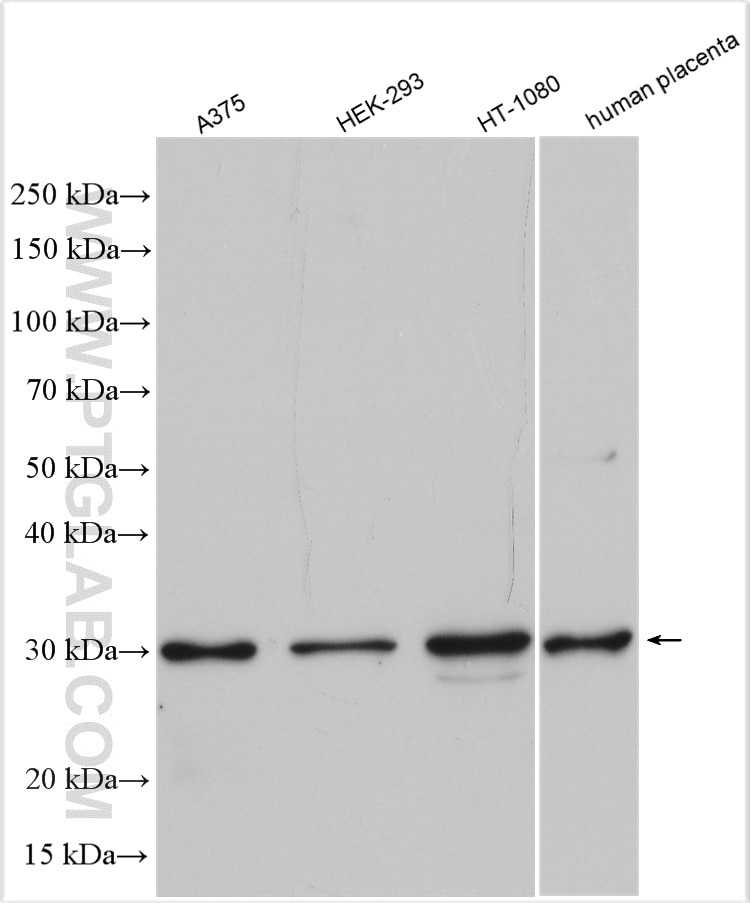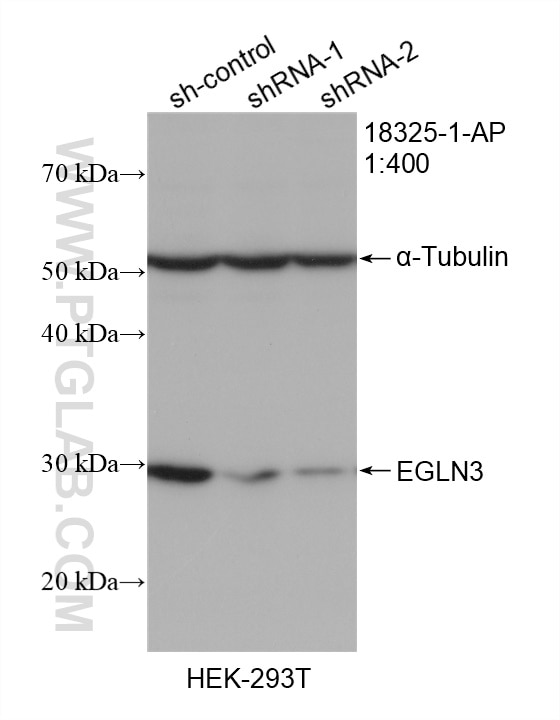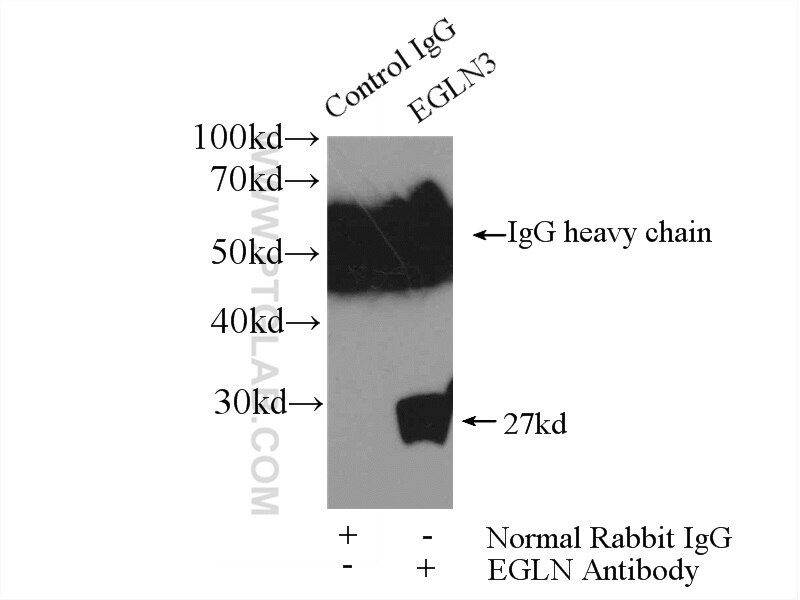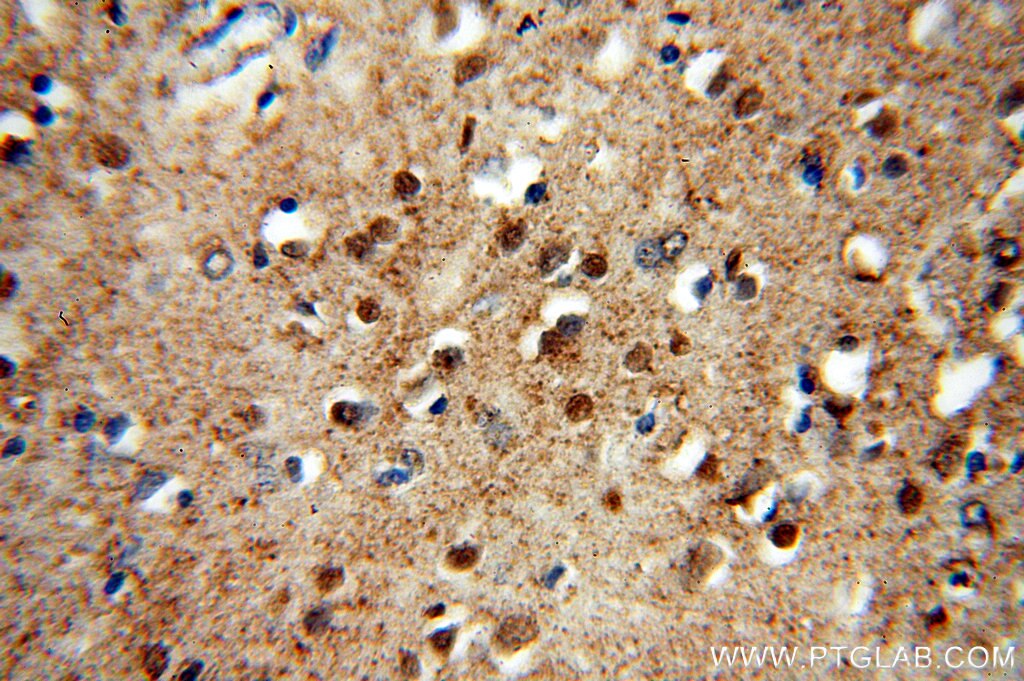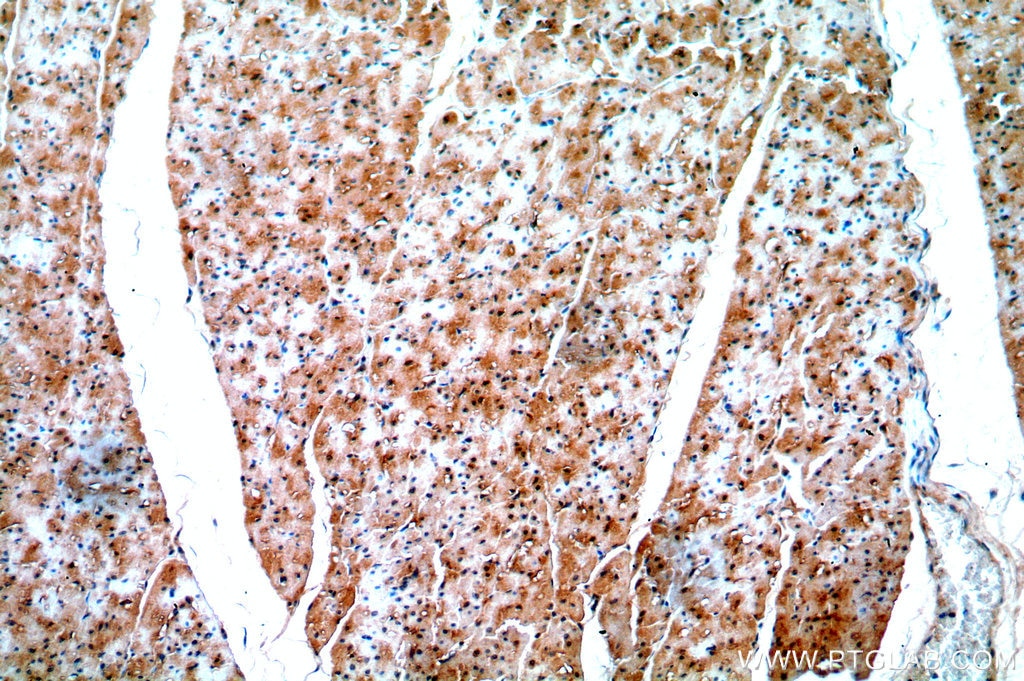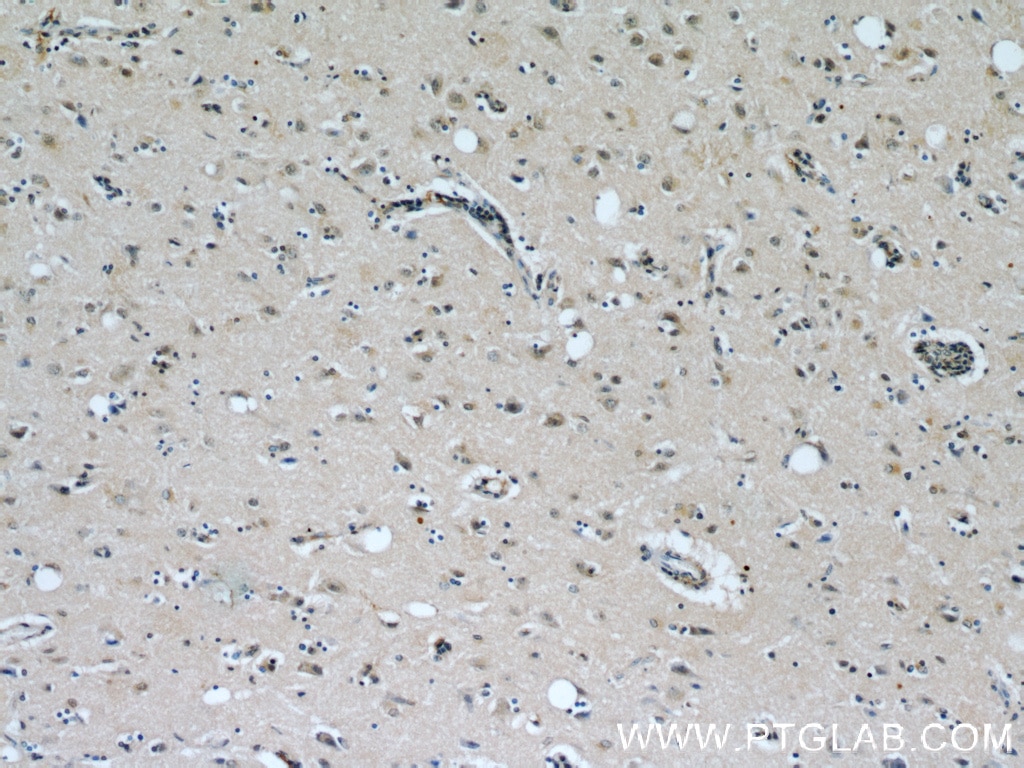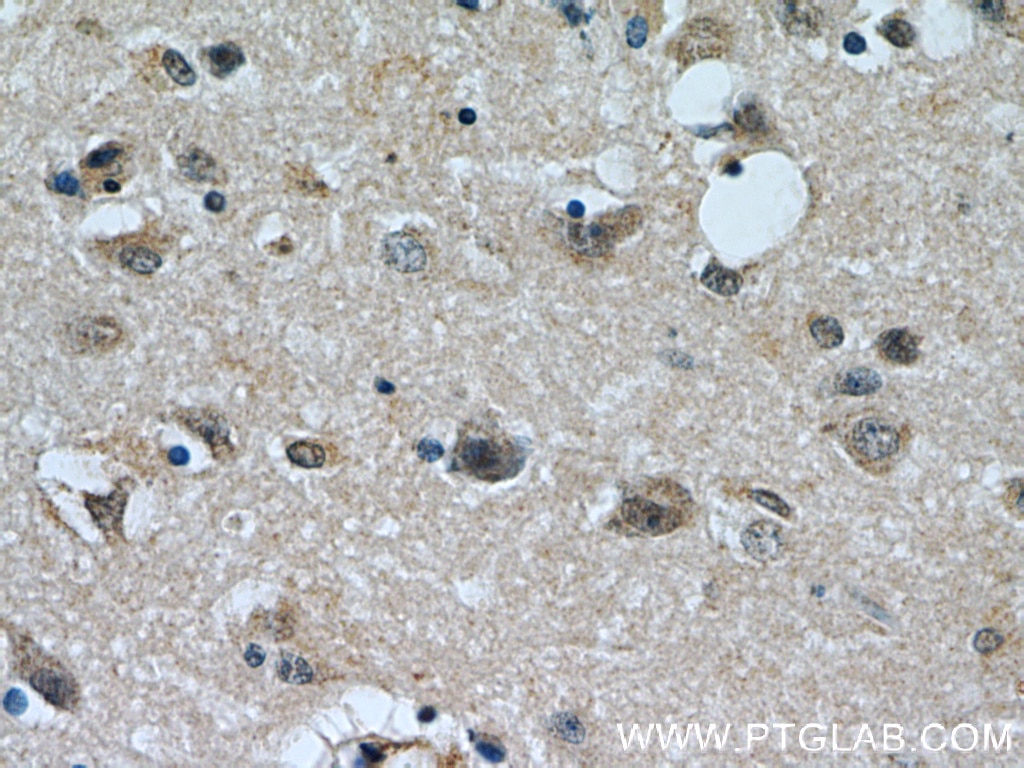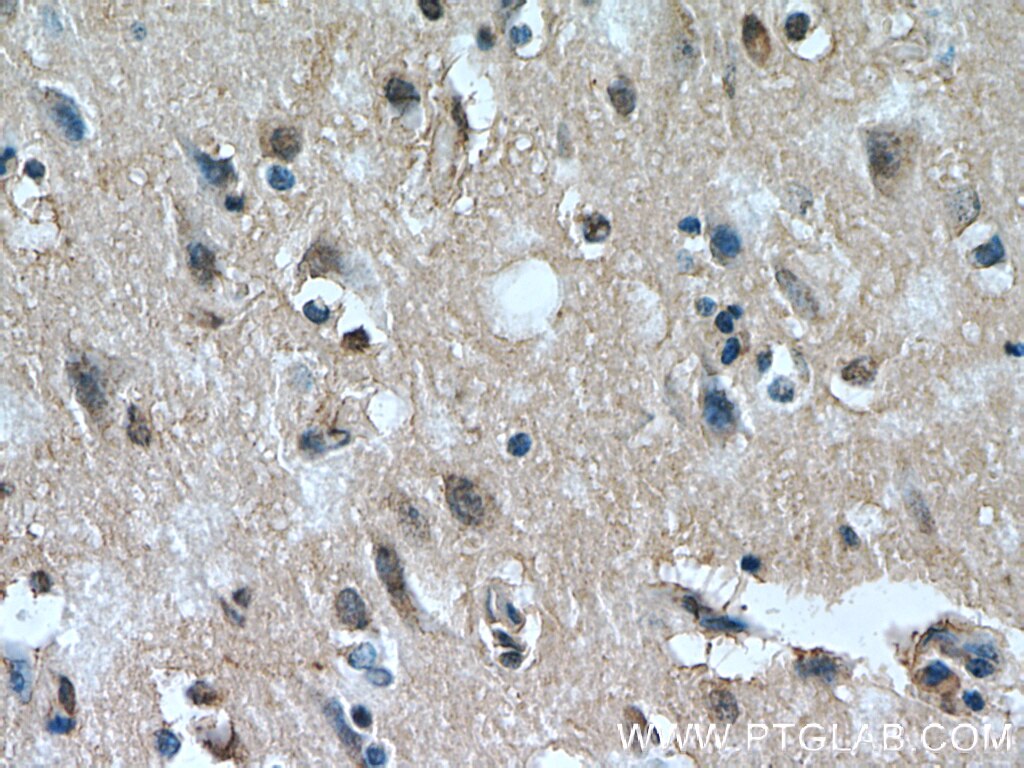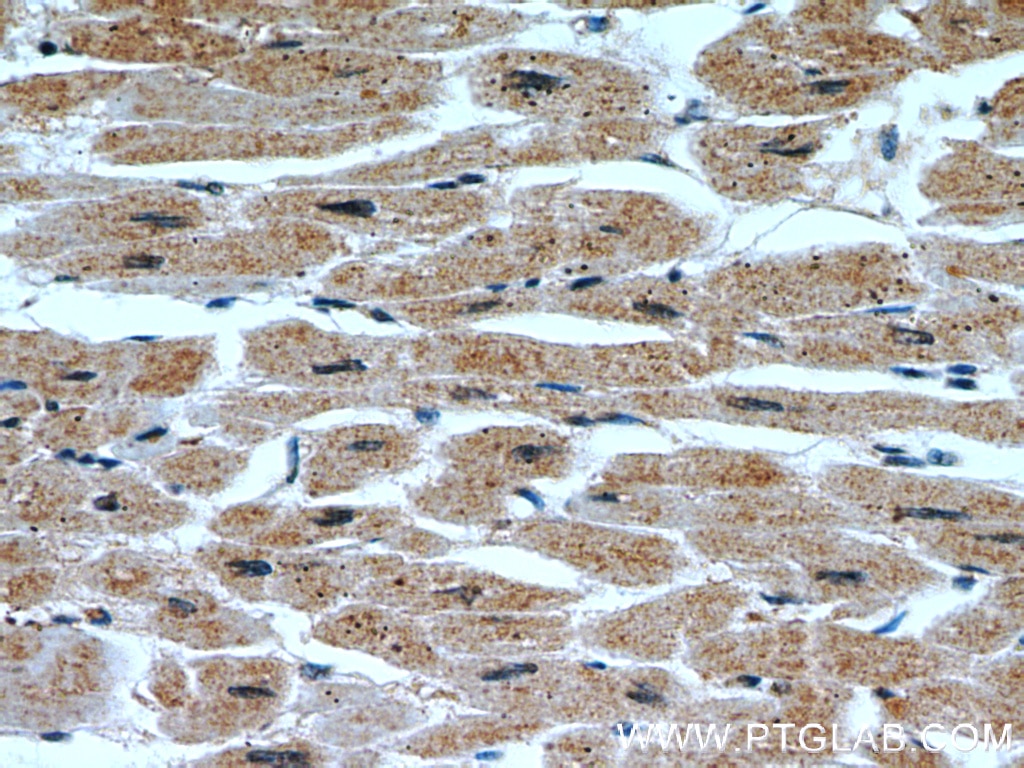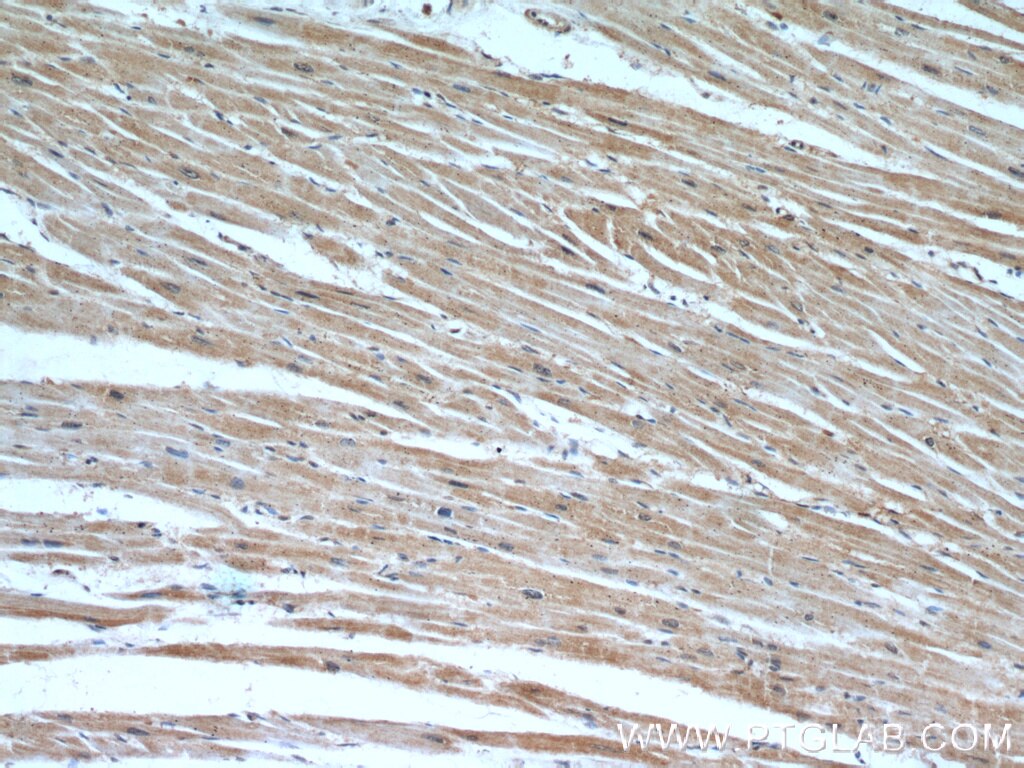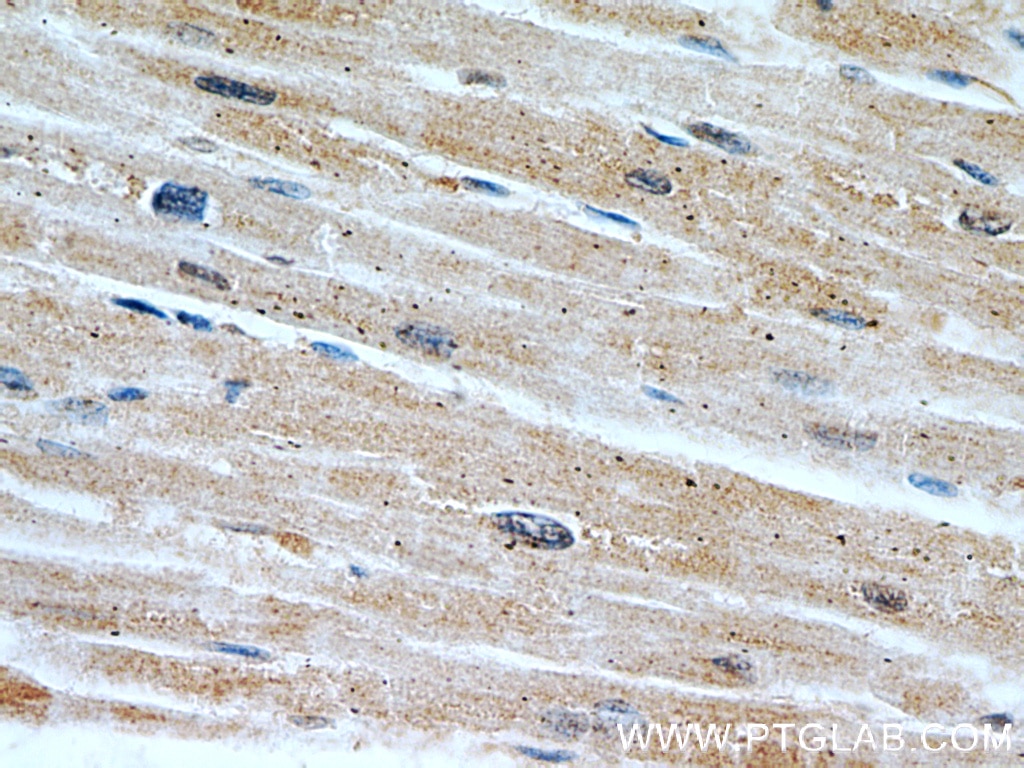- Phare
- Validé par KD/KO
Anticorps Polyclonal de lapin anti-EGLN3/PHD3
EGLN3/PHD3 Polyclonal Antibody for WB, IP, IHC, ELISA
Hôte / Isotype
Lapin / IgG
Réactivité testée
Humain et plus (1)
Applications
WB, IHC, IP, ELISA
Conjugaison
Non conjugué
N° de cat : 18325-1-AP
Synonymes
Galerie de données de validation
Applications testées
| Résultats positifs en WB | cellules A375, cellules HEK-293, cellules HEK-293T, cellules HT-1080, tissu placentaire humain |
| Résultats positifs en IP | cellules A375 |
| Résultats positifs en IHC | tissu cérébral humain, tissu cardiaque humain il est suggéré de démasquer l'antigène avec un tampon de TE buffer pH 9.0; (*) À défaut, 'le démasquage de l'antigène peut être 'effectué avec un tampon citrate pH 6,0. |
Dilution recommandée
| Application | Dilution |
|---|---|
| Western Blot (WB) | WB : 1:500-1:3000 |
| Immunoprécipitation (IP) | IP : 0.5-4.0 ug for 1.0-3.0 mg of total protein lysate |
| Immunohistochimie (IHC) | IHC : 1:20-1:200 |
| It is recommended that this reagent should be titrated in each testing system to obtain optimal results. | |
| Sample-dependent, check data in validation data gallery | |
Applications publiées
| KD/KO | See 2 publications below |
| WB | See 12 publications below |
| IHC | See 4 publications below |
| IP | See 1 publications below |
Informations sur le produit
18325-1-AP cible EGLN3/PHD3 dans les applications de WB, IHC, IP, ELISA et montre une réactivité avec des échantillons Humain
| Réactivité | Humain |
| Réactivité citée | Humain, souris |
| Hôte / Isotype | Lapin / IgG |
| Clonalité | Polyclonal |
| Type | Anticorps |
| Immunogène | EGLN3/PHD3 Protéine recombinante Ag13197 |
| Nom complet | egl nine homolog 3 (C. elegans) |
| Masse moléculaire calculée | 27 kDa |
| Poids moléculaire observé | 27-30 kDa |
| Numéro d’acquisition GenBank | BC010992 |
| Symbole du gène | EGLN3 |
| Identification du gène (NCBI) | 112399 |
| Conjugaison | Non conjugué |
| Forme | Liquide |
| Méthode de purification | Purification par affinité contre l'antigène |
| Tampon de stockage | PBS with 0.02% sodium azide and 50% glycerol |
| Conditions de stockage | Stocker à -20°C. Stable pendant un an après l'expédition. L'aliquotage n'est pas nécessaire pour le stockage à -20oC Les 20ul contiennent 0,1% de BSA. |
Informations générales
EGLN3, also named as HPH-1, HIF-PH3, HPH-3 and PHD3, is a cellular oxygen sensor that catalyzes, under normoxic conditions, the post-translational formation of 4-hydroxyproline in hypoxia-inducible factor (HIF) alpha proteins. It hydroxylates a specific proline found in each of the oxygen-dependent degradation (ODD) domains (N-terminal, NODD, and C-terminal, CODD) of HIF1A. It is a regulator of cardiomyocyte and neuronal apoptosis. EGLN3 can be a prognostic marker for gastric cancer.
Protocole
| Product Specific Protocols | |
|---|---|
| WB protocol for EGLN3/PHD3 antibody 18325-1-AP | Download protocol |
| IHC protocol for EGLN3/PHD3 antibody 18325-1-AP | Download protocol |
| IP protocol for EGLN3/PHD3 antibody 18325-1-AP | Download protocol |
| Standard Protocols | |
|---|---|
| Click here to view our Standard Protocols |
Publications
| Species | Application | Title |
|---|---|---|
Cell Res Hypoxia induces mitochondrial protein lactylation to limit oxidative phosphorylation | ||
Cancer Res Prolyl Hydroxylase 3 Attenuates MCL-1-Mediated ATP Production to Suppress the Metastatic Potential of Colorectal Cancer Cells. | ||
Mol Ther WDR5 facilitates EMT and metastasis of CCA by increasing HIF-1α accumulation in Myc-dependent and independent pathways.
| ||
Mol Oncol Ryanodine receptor 2 promotes colorectal cancer metastasis by the ROS/BACH1 axis | ||
Asian J Androl CHD1 deletion stabilizes HIF1α to promote angiogenesis and glycolysis in prostate cancer | ||
Bioengineered A novel hypoxia-driven gene signature that can predict the prognosis of hepatocellular carcinoma. |
